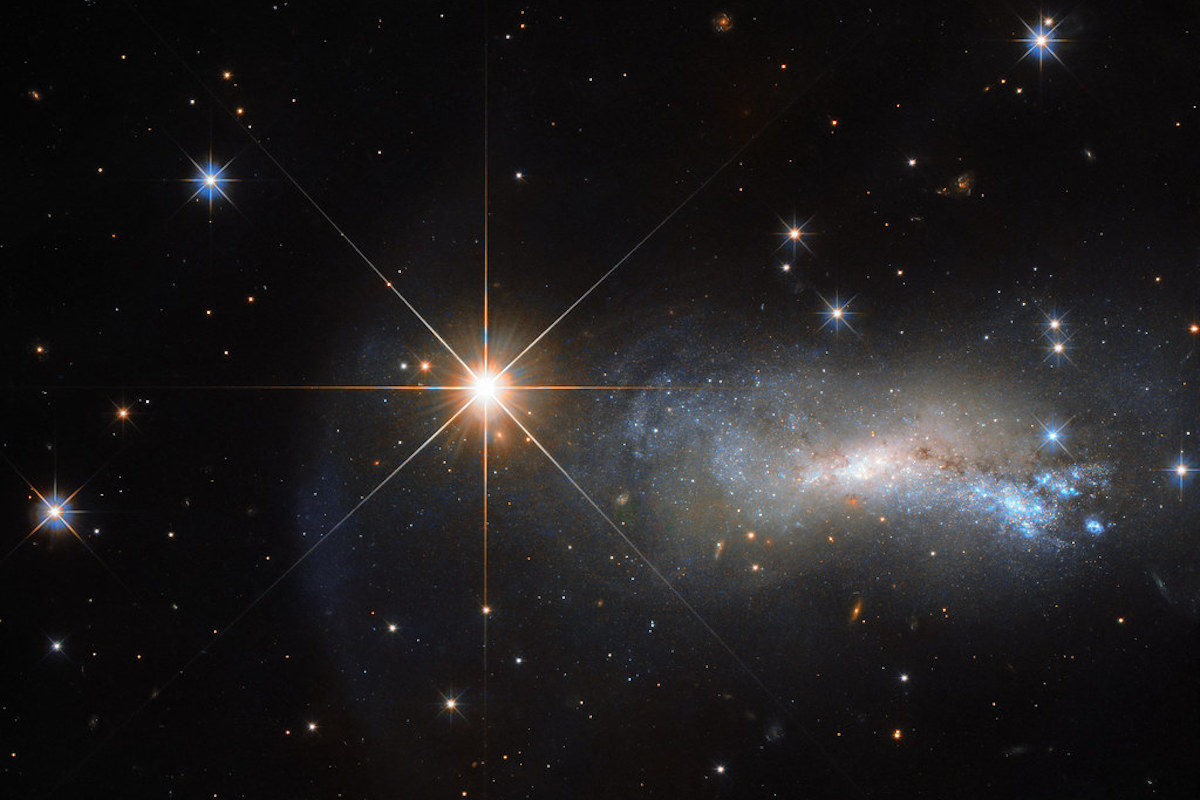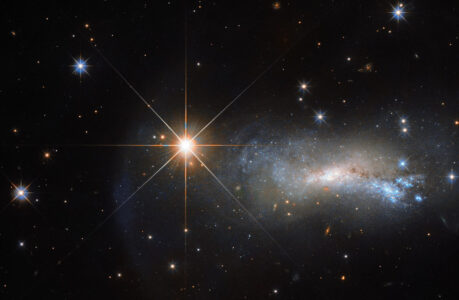The Lacerta constellation is one of the lesser-known constellations in the night sky. It is located in the northern hemisphere and is visible from Ireland during certain times of the year. Despite its relative obscurity, the Lacerta constellation has a rich history and mythology that makes it worth exploring for stargazers and amateur astronomers alike. In this article, we’ll take a closer look at the Lacerta constellation, its history, and how to observe it from Ireland.
What is the Lacerta Constellation?
The Lacerta constellation is located in the northern hemisphere, just north of the celestial equator. It is one of the smallest constellations in the night sky and is bordered by the constellations Cygnus, Andromeda, Pegasus, and Cassiopeia. The name “Lacerta” comes from the Latin word for lizard, as the constellation was named after a lizard-like creature in Greek mythology.
The Lacerta constellation is not particularly bright, and its stars are relatively dim compared to other constellations. However, it still holds a special place in the hearts of astronomers and stargazers who appreciate its unique shape and history.
History and Mythology:
The Lacerta constellation has a rich history and mythology that dates back to ancient Greece. According to Greek myth, the constellation was named after a lizard-like creature that lived in the area around the Temple of Athena in Athens. The creature was said to be a guardian of the temple and was known for its fierce loyalty and strength.
In medieval Europe, the Lacerta constellation was often associated with the legend of Saint George and the Dragon. The constellation was said to represent the dragon that Saint George defeated, and it was believed that the stars in the constellation held the key to unlocking the secrets of the universe.
Observing the Lacerta Constellation from Ireland:
The Lacerta constellation is visible from Ireland during certain times of the year. The best time to observe the constellation is during the autumn months, when it is highest in the sky. To observe the Lacerta constellation from Ireland, you will need a clear view of the northern horizon and a good pair of binoculars or a telescope.
The best way to locate the Lacerta constellation is to look for its brightest star, Alpha Lacertae. This star is located near the border between the constellations Cygnus and Andromeda and is relatively easy to spot with the naked eye. Once you have located Alpha Lacertae, you can use a star chart or a smartphone app to help you identify the other stars in the constellation.
The Lacerta constellation may not be as well-known as some of the other constellations in the night sky, but it still holds a special place in the hearts of astronomers and stargazers. Its unique shape and rich history make it worth exploring for anyone interested in the mysteries of the universe. By following the tips outlined in this article, you can observe the Lacerta constellation from Ireland and experience the beauty of the night sky like never before.
How can I see the constellation of Lacerta from Ireland?
To observe the constellation of Lacerta from Ireland, you will need a clear view of the northern horizon and a good pair of binoculars or a telescope. The best time to observe Lacerta from Ireland is during the autumn months, when it is highest in the sky.
First, locate the bright star Alpha Lacertae, which is near the border between the constellations Cygnus and Andromeda. Alpha Lacertae is the brightest star in the constellation and can be seen with the naked eye, even from areas with some light pollution. Once you have located Alpha Lacertae, you can use a star chart or a smartphone app to help you identify the other stars in the constellation.
Lacerta is a relatively small constellation and its stars are not particularly bright, so a telescope or binoculars will help you see it more clearly. Try to observe Lacerta from a dark location away from city lights, as light pollution can make it difficult to see faint stars. With patience and persistence, you can observe the Lacerta constellation and appreciate its unique shape and history.
The mythology of the constellation of Lacerta
The Lacerta constellation has a rich history and mythology that dates back to ancient Greece. According to Greek myth, the constellation was named after a lizard-like creature that lived in the area around the Temple of Athena in Athens. The creature was said to be a guardian of the temple and was known for its fierce loyalty and strength.
In medieval Europe, the Lacerta constellation was often associated with the legend of Saint George and the Dragon. The constellation was said to represent the dragon that Saint George defeated, and it was believed that the stars in the constellation held the key to unlocking the secrets of the universe.
In another legend, Lacerta is associated with the goddess Hera. According to the myth, Hera was so impressed with the strength and loyalty of the lizard-like creature that she placed it among the stars as a constellation.
In Chinese astronomy, the stars in the Lacerta constellation were associated with a celestial palace where the emperor lived. The constellation was believed to bring good fortune and prosperity to those who saw it.
Although the Lacerta constellation may not be as well-known as some of the other constellations in the night sky, its mythology and history make it a fascinating object of study for those interested in astronomy and mythology.
The Stars in the constellation of Lacerta
The Lacerta constellation is relatively small and contains only a few stars, with none brighter than third magnitude. Here are some of the most notable stars in the constellation:
- Alpha Lacertae: Alpha Lacertae is the brightest star in the Lacerta constellation, with an apparent magnitude of 3.8. It is a white subgiant star located approximately 102 light-years from Earth.
- Beta Lacertae: Beta Lacertae is a yellow giant star with an apparent magnitude of 4.4. It is located approximately 170 light-years from Earth.
- Gamma Lacertae: Gamma Lacertae is a binary star system located approximately 190 light-years from Earth. The two stars in the system orbit each other every 115 years and have an apparent magnitude of 3.8.
- Delta Lacertae: Delta Lacertae is a blue-white giant star located approximately 230 light-years from Earth. It has an apparent magnitude of 4.3.
- 1 Lacertae: 1 Lacertae is a binary star system located approximately 170 light-years from Earth. The two stars in the system orbit each other every 214 years and have an apparent magnitude of 4.6.
Overall, the Lacerta constellation is not particularly bright, and its stars are relatively dim compared to other constellations. However, it still holds a special place in the hearts of astronomers and stargazers who appreciate its unique shape and history.
Deep sky objects visible in the Constellation of Lacerta
The Lacerta constellation may be small, but it does contain some interesting deep sky objects that are worth exploring. Here are some of the most notable deep sky objects in the Lacerta constellation:
- NGC 7243: NGC 7243 is an open star cluster located in the western part of the Lacerta constellation. It is also known as the “Lacerta Cluster” and contains approximately 40 stars. It is a relatively young cluster, with an estimated age of around 100 million years.
- IC 5217: IC 5217 is a planetary nebula located in the eastern part of the Lacerta constellation. It has a distinctive bowtie shape and is also known as the “PK 87+1.1” nebula. It is located approximately 3,000 light-years from Earth.
- Abell 2151: Abell 2151 is a cluster of galaxies located in the northern part of the Lacerta constellation. It is also known as the “Hercules Cluster” and contains over 200 galaxies. It is located approximately 500 million light-years from Earth.
- ARP 55: ARP 55 is a pair of interacting galaxies located in the southern part of the Lacerta constellation. It is also known as “VV 340” and is believed to be the result of a collision between two galaxies. It is located approximately 450 million light-years from Earth.
Overall, the Lacerta constellation may not contain as many deep sky objects as some of the other constellations, but it still offers some interesting targets for stargazers and astronomers to explore.

